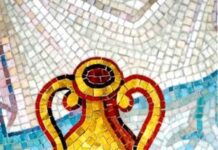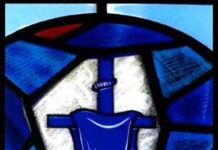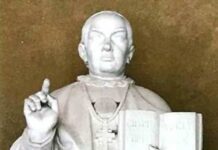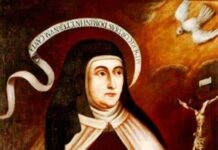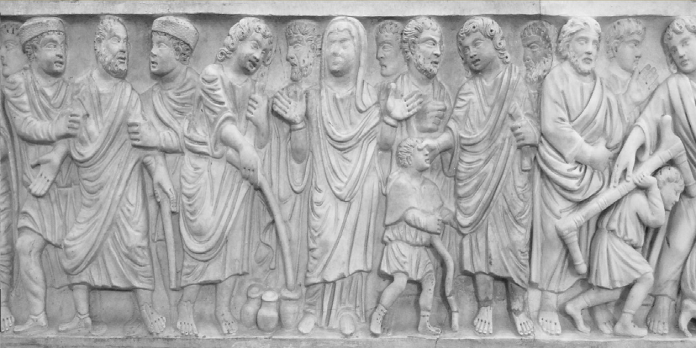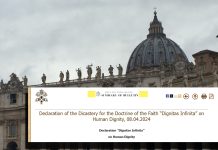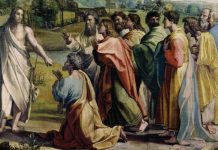
“Cast yourself into the arms of God and be very sure that if He wants anything of you, he will fit you for the work and give you strength.” – St. Philip Neri
Our story begins as Jesus starts gathering his disciples. The following passage of the Gospel of John will allow us to glean some interesting information about Simon Peter, the fisherman from Galilee.
The next day John [the Baptist] again was standing with two of his disciples, and as he watched Jesus walk by, he exclaimed, ‘Look, here is the Lamb of God!’ The two disciples heard him say this, and they followed Jesus. When Jesus turned and saw them following, he said to them, ‘What are you looking for?’ They said to him, ‘Rabbi’ (which translated means Teacher), ‘where are you staying?’ He said to them, ‘Come and see.’ They came and saw where he was staying, and they remained with him that day. It was about four o’clock in the afternoon. One of the two who heard John speak and followed him was Andrew, Simon Peter’s brother. He first found his brother Simon and said to him, ‘We have found the Messiah’ (which is translated Anointed). He brought Simon to Jesus, who looked at him and said, ‘You are Simon son of John [Yohanan]. You will be called Kepha (which is translated Peter). The next day Jesus decided to go to Galilee. He found Philip and said to him, ‘Follow me.’ Now Philip was from Bethsaida, the city of Andrew and Peter. Philip found Nathanael and said to him, ‘We have found him about whom Moses in the law and also the prophets wrote, Jesus son of Joseph from Nazareth.’ Nathanael said to him, ‘Can anything good come out of Nazareth?’ Philip said to him, ‘Come and see.’ When Jesus saw Nathanael coming towards him, he said of him, ‘Here is truly an Israelite in whom there is no deceit!’ Nathanael asked him, ‘Where did you come to know me?’ Jesus answered, ‘I saw you under the fig tree before Philip called you.’ Nathanael replied, ‘Rabbi, you are the Son of God! You are the King of Israel!’ Jesus answered, ‘Do you believe because I told you that I saw you under the fig tree? You will see greater things than these.’ And he said to him, ‘Very truly, I tell you, you will see Heaven opened and the angels of God ascending and descending upon the Son of Man.’ (John 1:43-51)
The information we are looking for requires that we look at the image described as well as the words describing it. John the Baptist sees Jesus –whom he had baptized very recently– and reveals to those present that Jesus is the Lamb of God. For any practicing Jew that was a revelation. The Lamb of God is a redemptive figure, the antitype of the lamb sacrificed at every Passover. That is what Andrew, Simon Peter and presumably, young John son of Zebedee understood Jesus was. John was obliquely saying to them that the man passing by was the Messiah. Later, Jesus meets Philip who goes to inform Nathanael that they had found the Messiah, the Christ. By that time they know he is the son of Joseph. Here is a double finding: “Son of Joseph” is a mysterious way in which some ancient scholars of Holy Scripture referred to the awaited Messiah. Jesus was also known as the son of a man called Joseph. It is reasonable to infer that the new disciples of Jesus learned that their newfound Teacher was from Bethlehem, like his father Joseph, the carpenter, the husband of Mary of Nazareth. Bethlehem (lit. “house of bread”) was the town where the prophets expected the Messiah to be born.
‘In Bethlehem of Judea; for so it has been written by the prophet: “And you, Bethlehem, in the land of Judah, are by no means least among the rulers of Judah; for from you shall come a ruler who is to shepherd my people Israel.”‘ (Matthew 2:5-6)
Now let us look at that passage (John 1:43-51) from a distance and see the image. To John the Baptist is granted to see that the man Jesus is perhaps the promised Messiah. John knows he is either the Messiah or someone who is almost as important as the Messiah. The new disciples of Jesus are convinced right away, they trust the Baptist’s instinct. Nathanael is a bit more skeptic about the newly found Messiah, more so when he learns that Jesus is apparently a Galilean. But Jesus tells Nathanael about his standing under the fig tree –praying perhaps– and follows up with a precise evaluation of Nathanael’s character “an Israelite in whom there is no deceit!” I dare to guess that Nathanael was praying and perhaps asking God to hasten the restoration of Israel. That is presumably why Jesus did not say “a Jew in whom there is no deceit!” It is also important to notice the fig tree, a sign or symbol of the faith of Israel. Under the fig tree, Nathanael may have been praying or thinking about Habakkuk’s song of hope and faith when Jesus came to him, the man whose name means “God is salvation”.
Though the fig tree does not blossom, and no fruit is on the vines; though the produce of the olive fails and the fields yield no food; though the flock is cut off from the fold and there is no herd in the stalls, yet I will rejoice in the Lord; I will exult in the God of my salvation. (Habakkuk 3:17-18)
On one end, John the Baptist reveals the secret identity of Jesus. On the other end, Jesus reveals himself supernaturally to Nathanael as the Christ by showing him that the Messiah is able to read the heart of a man even when that man is standing in solitude. This seems to be one of those cases in which God answers one’s prayers almost instantly. That was a sign of predestination for Nathanael who was chosen to be one of the Twelve.
The location is revealed as well. John the Baptist preached in the wilderness near the Dead Sea. Simon and Andrew are somewhat far from their usual area of activity in Capernaum near the Sea of Galilee. They are visiting the wilderness of Judea to hear the preaching of the Baptist. There seems to be the first time Jesus mentioned that Simon “will be called Kepha” which is the Aramaic word for “rock”. Petros, from which the name Peter is derived, is the Greek equivalent of that word.
Philip (Φίλιππος, friend of horses) and Andrew (Ἀνδρέας, masculine, manly) are Greek names. We know Simon Peter, Andrew and Philip were from Bethsaida, a city with a mixed population of Jews and Greek speaking gentiles. Capernaum was more of a Jewish enclave compared to its more cosmopolitan counterpart of Bethsaida. It is quite possible that Simon Peter was already fluent in the Greek language before moving to Capernaum to do business there.
Just like Jesus supernaturally saw Nathanael before meeting him physically, God disposed things in a way that made possible for Peter to have some knowledge of Greek, the lingua franca of his times. Simon Peter may have used that language in his business and also later when preaching the Gospel in Asia Minor and later in Rome. (Galatians 2:11-14; 1Peter 1:1) God was on the move many years before Simon Peter met Jesus. Heaven was fishing and Peter did not know it but very likely the Galilean fisherman lived his whole life tucked securely inside the divine net. God destined Peter to catch men alive but it was Peter the first man to be caught.



